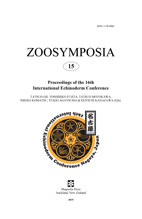Abstract
Estimating survival rate is a basic part of population studies. Generally it is assumed that populations being studied are both stable and stationary. This probably is seldom the case although as a long-term average populations may persist at a mean density. Estimating survival in short-term studies may fail to capture average rates. A long-term study of the purple sea urchin Strongylocentrotus purpuratus at Sunset Bay, OR, USA from 1964–2009 is used to demonstrate methods for estimating survival based on the coefficient of variation of size distributions, the fraction of new recruits in a population, means of size data coupled with estimates of growth, and a method that uses rates of flow through size categories. A short-term study of just a few years may by chance sample when an unusual recruitment event drives a population far from stationary structure and so distorts the estimate of mean survival. The best solution, as shown for S. purpuratus, is a long time series but in advance it cannot be determined how long this should be. If a study of three years shows no substantial change in population size structure it may be reasonable to accept estimates of survival.

